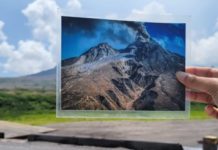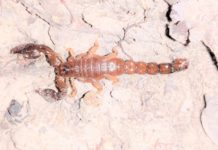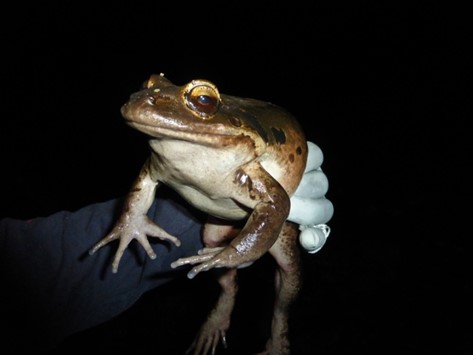Sunday success
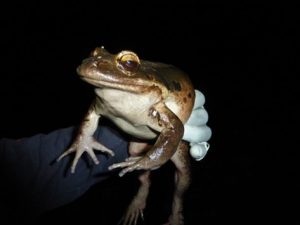
Fortunately we did not have to progress those thoughts as on Sunday 26 June eleven days after I had arrived and the first day all of us – myself, Luke and Katy from Chester (who had just arrived the previous day) – were out together we had success. As usual we arrived in Fairy Walk, had a much needed rest, drank some water and started our nightly search. Within twenty minutes I heard Blacka shout my name and knew he’d found something. Trying not to stumble over too many rocks in the dark and not get my hopes up too much I made my way to him. Here I found him smiling and pointing to a patch by the side of the
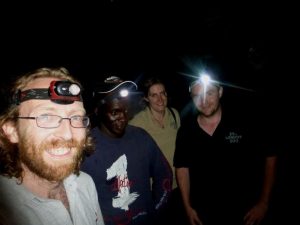
ghaut. There she was – a splendid looking wild mountain chicken. Joy. Excitement. Relief. These were just some of the emotions I was feeling when I saw her.
Luke and Katy were equally thrilled when they joined back up with Blacka and I, as we could then do what we went there to do. First, we scanned her PIT tag, then took and recorded her biometrics – weight, snout-vent length, leg length and body temperature – which gives an indication of her health and fitness. She looked in fine condition and weighed a very healthy 650g. We also took two sets of swabs which will be tested for the presence of chytrid fungus and a buccal swab. This latter swab will enable her genetics to be tested to see if there is anything there that may indicate a natural resistance to the disease and also be heritable.
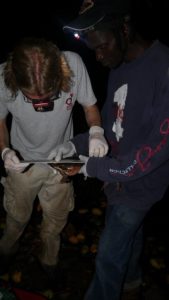
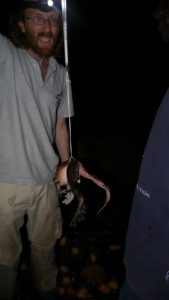
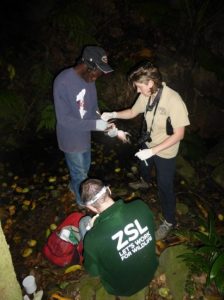
Measuring (left) and weighing the female (middle), swabbing female for chytrid and recording information (right) Photos: left and middle Katy Upton / Chester; right Jeff Dawson / Durrell
After processing her we then moved her to what would be her new home – Blacka carefully carrying her in a cloth bag so as to minimise stress. The male’s location was some 700m down the ghaut and walking down it, it was obvious that if we left both frogs where they were they would never meet. The going was fairly tricky, with some huge boulders, near vertical slopes and treacherous rock faces to traverse.
Upon getting to the release location we prepared to do what is known as a soft release; a technique used during the experimental releases conducted during the last research phase on Montserrat. This involves setting up a tent, lining the floor with leaves into which the frogs are placed. They are shut in for a short period of time following the move to help de-stress, before opening the tent sides and leaving them alone to move out in their own time. Whilst setting up we were also lucky to find the male sitting close by. After collecting his biometrics and swabbing him we decided to place him in the tent as well, before leaving them to move of themselves.
As we sat down the path well away from them it was amazing to hear them both making contact calls. It is likely that the last time either of them encountered another mountain chicken was over three years ago. Returning to the tent 45 minutes later both frogs were out and sitting on the forest floor. Packing up the equipment we left them together, embarking on the long walk out, very happy in the knowledge that we had successfully completed our mission and given them the opportunity to meet and breed.
Jeff Dawson, Amphibian Programme Manager, Durrell Wildlife Conservation Trust


